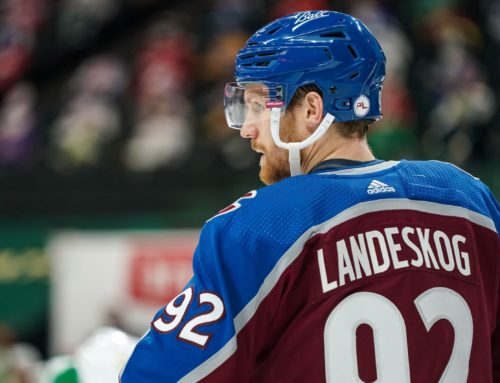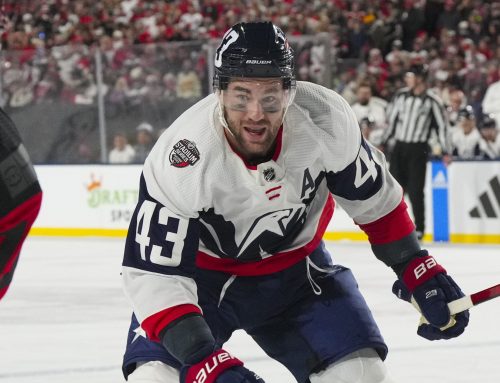Capped: Season Review – Trade Market
Eric Daoust
2014-03-27

Daoust reviews this season’s trade market in cap leagues…
The first full season of the new NHL collective bargaining agreement (CBA) has been an unusual one for all fantasy hockey managers. Some of the rule changes have accelerated player movement as teams adjust to the new landscape. This season we have seen examples of retention of salary facilitating some trades that would not have happened under the old CBA. This includes the unexpected trade of Roberto Luongo to the Florida Panthers. The fantasy implications were massive as Tim Thomas was immediately out as number-one goaltender in Florida while the young Eddie Lack became the new man in Vancouver.
In salary cap leagues the impact of the new rules has been even more significant. With fewer cap dollars available and no rollback on existing deals some players were forced to take pay cuts. This had the effect of creating cap bargains that can provide excellent value to your fantasy squad. In turn, this development also made some of the older inflated contracts a tougher pill to swallow.
However, the effect of the new CBA extends far beyond just the individual value of players. Last week we looked at the impact of the lower cap ceiling on the quality of unclaimed free agents in one of my head-to-head dynasty leagues, the UHL which is composed mostly of forum regulars and staff members of this website. The tighter financial climate resulted in many productive players, mostly highly-paid veterans, remain on the waiver wire as teams opted for cheaper alternatives to round out their rosters.
Before we go any farther, here is the breakdown of the league in question:
United Hockey League (dynasty) – currently in semi-final round
Scoring setup: Head-to-Head
Teams: 24
Pro Rosters: 23 + 4 IR (3LW, 3C, 3RW, 3F, 6D, 1G, 4BN)
Farm Rosters: 27 (max 160 GP for farm eligibility) + one-year protection for newly-drafted prospects
Categories: G, A, +/-, PIM, SOG, GWG, PPP, SHP, Hit, Blk, FOW, W, GAA, SV, SV%, SO
Salary Cap Ceiling: same as NHL
A trade market lacking action
Obviously, the new CBA has also had a major effect on trading in the UHL. The rule changes led to the majority of teams being close to the salary cap ceiling, including many of the non-contenders. Obviously, having some free cap space facilitates trading. When the opposite happens, it makes trading very difficult as most teams are unable to accept more salary than they are giving away in a deal. The only way to proceed is for one or both teams to add more to the trade so that the salaries on both sides even out.
Unfortunately, this approach only works when teams have dead weight on their rosters and when the players in question are enough to make the trade legal financially. The league’s contenders, who generally manage their teams very well, do not own players that they are willing to just throw away. This increases the complexity of making trades work and often reduces the list of potential trade partners.
In the end, it was a very difficult year for trading. Cap space became a valuable commodity. Those that have it, either organically or due to injuries, could get extra value in trades if they are taking on some of the other team’s excess salary. Rebuilding teams were able to stockpile picks as they accepted their rivals’ unwanted players.
Looking deeper into the matter
Cap leagues add the financial element to player values that make any trade more complicated than in other leagues. Some fundamental concepts such like buying low and selling high do not always work in cap leagues. While the trade might make a lot of sense from a hockey perspective, the cap hit difference can make the trade’s completion impossible. This was even more prevalent this year with all of the obstacles standing between teams and transactions.
For example, Frans Nielsen is a player on my team in this league that was a prime sell-high candidate early in the season. At that time, he was producing like a star even though he was clearly playing over his head and would eventually settle into a scoring rate much closer to the career average. In a cap league there were a few factors standing in the way of a trade being completed.
Nielsen’s cap hit of $2.75 million makes him an excellent bargain on my team even before his surge in production. He is a very underrated player in this format and his cost is close to the league average. Selling high would mean trying to acquire a player that is more proven and probably has a higher salary. However, with my team pushing for championships and obviously close to the cap ceiling it was not possible to acquire a more expensive upgrade. There are not many players at Nielsen’s level in that salary range so ultimately he stayed on my team as part of my group of cheap depth guys that allow me to retain several more expensive stars.
Likewise, the new landscape made it difficult to buy low on proven contributors that slumped out of the gate. Take Jarome Iginla for example. After managing just a single assist in his first six contests, many began to wonder if age was finally catching up. This was a great time to buy low a guy that is known for being a slow starter. But at $6 million it is a daunting task to put together a fair trade that is also financially responsible. If you offer multiple players off of your main roster to make the money match on both sides, then in addition to adding Iggy you also have to fill those empty roster spots with new players.
Stalemate broken
Next week we will look at how long-term injuries allowed teams to re-open trade talks. This was a refreshing turn of events after a season of frustration in trade talks and allowed the league to enjoy some fun moments leading up to the trade deadline.
Follow me on Twitter: @DH_EricDaoust





 T.B
T.B FLA
FLA NYI
NYI CAR
CAR TOR
TOR VGK
VGK EDM
EDM VAN
VAN MIN
MIN
